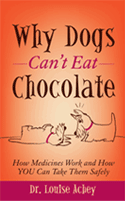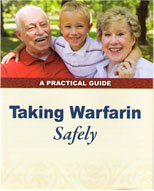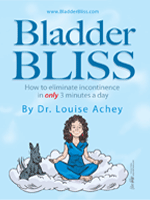September 22nd, 2014. Filed Under:
consumer information,
Medicine,
Medicine dangers,
medicines,
Uncategorized.
Tags:
antacid,
heartburn,
Maalox,
Mylanta,
Nexium®,
PPI,
Prilosec®,
proton pump inhibitor,
ranitidine,
Tums,
ulcers,
Zantac®Q: I take a prescription strength stomach acid medicine called Prevacid® which has helped my heartburn a lot. Now my insurance company is refusing to cover it. When I stop it, all my heartburn symptoms come back. What can I do?
Prevacid® is an acid blocking medicine called a proton pump inhibitor, or PPI. Every time you eat or drink something, a miniature pump called a proton pump shoots gastric acid into your stomach to start digesting that piece of yummy apple pie ala mode you just ate. Prevacid® and other PPIs reduce heartburn and help heal stomach ulcers by reducing the amount of gastric acid in your stomach.
PPIs are our most effective medicines for treating excessive stomach acid and are very good at helping heal ulcers. PPIs can even help prevent ulcers. People taking blood thinners like warfarin or Coumadin® together with pain medicines like ibuprofen or naproxen have less problems with bleeding ulcers if they are also taking a PPI.
Twenty-two years ago while taking the very last capsule of an antibiotic called doxycycline, it got stuck. Extra water didn’t help. I could feel a pressure beneath my breastbone right where that darn pill had stuck. Soon it felt like I was swallowing fire every time I ate or drank anything. The pain kept increasing until I ended up in the Emergency Department diagnosed with an ulcer in my esophagus, all because of a pill dissolving in the wrong place!
The ER doctor started me on a prescription medicine called Prilosec®, the very first PPI available and for the next 6 weeks spicy food was off-limits. I glumly ate yogurt while my family enjoyed the Tex-Mex food at my youngest sister Margaret’s wedding in Austin, Texas.
Is it okay to take a PPI year after year?
It seems to be safe to take a PPI for years instead of just months, but there is a price. Absorbing Vitamin B12, iron, calcium and magnesium depends on having a certain amount of stomach acid. Those who take PPIs longer than a few months risk becoming deficient in these critical nutrients. Long-term use of PPIs is also associated with an increase in bone fractures both in men and women, possibly related to absorbing less calcium.
Stomach acid is one of the most important defenses our body has against foreign organisms. Taking a PPI long-term can lead to increased infections such as pneumonia or a particular organism called Clostridium difficile that causes antibiotic-associated diarrhea.
If you’ve suffered from heartburn when stopping your PPI you are not alone. Between 60-90% of folks taking a PPI for at least 3 months notice symptoms of stomach burning when they stop taking it.
Having heartburn symptoms come back when you stop your Prevacid® doesn’t mean you’re stuck on it for the rest of your life.
Here are 3 approaches to reducing your dependence on a PPI medicine:
1. If your doctor has no objections, slowly taper the dose down over several months before stopping it. If you take your PPI twice a day, start the taper by decreasing or stopping the evening dose. If you take the PPI once a day, taper by cutting the dose in half or taking it every other day. Stay on the reduced dose for several weeks before trying another decrease.
Taper the PPI dose every few weeks until you are off it completely. If your symptoms come back, start with the last dose you were symptom-free and stay on it another few weeks before trying to taper it. For some people this may take up to 9 months.
2. Switch to an older stomach medicine like Zantac® or ranitidine to help control your symptoms. Called an H2-blocker, medicines like Zantac® work best when taken at night. Taking a PPI in the morning and rantidine (Zantac®) at night can help keep your symptoms under control while tapering your PPI.
3. If your prescription PPI taper isn’t feasible or successful, you can switch to a PPI available without a prescription such as Prilosec® OTC or Prevacid® 24HR®. Another PPI has just become available over-the-counter (OTC): Nexium® 24HR.
For occasional fast-acting relief of heartburn, antacids like Tums®, Mylanta® and Maalox® are available in liquid form or chewable tablets. These older antacid products often contain calcium or magnesium, which can interfere with absorbing some prescription medicines. Please check with your pharmacist before taking them.
Leave a Comment
Q: My doctor wants me to start taking a medicine once a week to strengthen my bones. How long do I have to take it?
Osteoporosis is a disease in which your bones become thin, weak and more likely to break. It directly affects 10 million Americans and threatens nearly 34 million more, according to Amy Porter, Executive Director and CEO of the National Osteoporosis Foundation (NOF), a health organization dedicated to preventing osteoporosis and broken bones though awareness, education and research.
“Osteoporosis now causes an estimated two million fractures each year and can result in immobility, pain, and other health problems”, says Robert Recker, MD, the president of NOF.
My mother died of complications of osteoporosis. She broke her left wrist when she was 73 years old from tripping in downtown Seattle trying to catch a bus. Four years later she broke her right hip in another fall getting up to go to the bathroom in the middle of the night. Her right leg ended up one inch shorter than her left, causing her discomfort and inconvenience for the rest of her life.
In the United States, one out of every two women and one in four men over age 50 will have an osteoporosis-related fracture in their lifetime. Twenty percent of seniors who suffer a hip fracture will die within one year.
May is National Osteoporosis Awareness and Prevention Month. The National Osteoporosis Foundation (NOF) is encouraging Americans to learn more osteoporosis and how to keep their bones strong and healthy, including getting enough calcium and Vitamin D, doing some weight bearing exercise every day, quitting smoking and asking their doctor or medical provider about bone density testing.
Although complications show up in old age, osteoporosis is a disease of thinning bones that starts in childhood. Up to 90 percent of peak bone mass is built before 18 years of age in girls and 20 years old in boys. At menopause bone loss accelerates; the thinner your bones are to start with, the more likely you’ll eventually experience a fracture.
If you have passed menopause or have taken certain drugs, especially prednisone or corticosteroids, you may have thin bones without knowing it. Testing your bone density helps determine how likely you are to have a bone break in the future. If you are at risk, your bone loss can be slowed with medicine. My mother never knew she had thin bones until she broke her wrist. With screening and bone-building drugs available today she may have avoided the hip fracture that shortened her life.
Bone building drugs like alendronate (Fosamax®), Actonel® and Boniva® are called bisphosphonates. These powerful medicines have complicated directions, which is why most women prefer to take them once a week instead of every day. They must be taken with a full glass of water on a completely empty stomach, and you must stay upright at least 30 minutes afterward, no leaning back or lying down allowed.
The reason you need to keep yourself upright and drink a full glass of water is to avoid irritating your esophagus. The empty stomach is also very important because even with the best conditions only 2-3% of the medicine in each tablet will get absorbed into your body.
But what does get in stays in. These drugs become part of your bone cells and continue to work to build bone for you even after you stop the drug. How long do you have to take this medicine? That depends, and you and your medical provider should decide together. The current evidence is that if you are taking them to prevent a future fracture, five years may be enough. Both alendronate (Fosamax®) and Actonel® are effective in preventing hip and vertebral fractures for up to ten years, even after you have stopped taking them.
To find out more about osteoporosis and how you can prevent it from the National Osteoporosis Foundation stop by their website at www.nof.org.
Leave a Comment
Homeopathy is a branch of medical treatment that takes the motto “Less is More” to the limit and blasts right past it. Mr. Webster’s definition of homeopathy is the theory or system of curing diseases with very minute doses of medicine which in a healthy person and in large doses would produce a condition like that of the disease treated.
This definition describes the two basic theories of homeopathy: “like cures like” and the “law of minimum dose”. The name homeopathy comes from the Greek word homoios, which means “similar”; homeopathic physicians believe that they can cure a disease by giving a substance that causes similar symptoms in healthy people, just in very, very, VERY small amounts. According to the homeopathic theory of the “law of minimum dose”, the lower the dose of a particular medicine, the more effective it is.
Homeopathic remedies are small dissolving tablets labeled with their active ingredient and the dilution, which is a number followed by an x. A 1x dilution would be one part of the original solution diluted by 9 parts of water, then dripped onto small sugar tablets. A 2x dilution would be repeating the dilution process of 1:9, one part of the original 1:9 dilution added to 9 parts water before adding it to the tablet. Most homeopathic remedies are dilutions of 100x, 1000x, or 10,000x, which means little to no molecules of active ingredient are left in the solution put into the melting tablets.
Homeopathy developed as an alternative to the medical practice of using very large amounts of toxic agents to stimulate the body back to health. A German physician and chemist called Samuel Hahnemann developed homeopathy in the late 1700s. Dr. Hahnemann was highly respected for his knowledge of the action of drugs and the author of several reference works on the subject, but was also openly critical of conventional medical treatments common at that time, which included repeated sessions of bloodletting, leeches and purging using large doses of compounds containing lead, mercury, and arsenic.
Dr. Hahnemann did something very different to treat his patients. He gave them very small doses of one medicine at a time and watched to see how they reacted before giving them any more.
The gold standard for an effective medicine or treatment today is scientific evidence, or proof that a medication can make a measurable and beneficial difference in the illness it is supposed to treat. This is called Evidence Based Medicine, or EBM. Using EBM has helped to change commonly held beliefs that don’t have any facts behind them and to sort out the treatments that can be beneficial from those that can cause harm.
Unfortunately homeopathy lacks any scientific evidence to support it. It’s not possible to logically explain how something that contains little or no molecules of active ingredient can have a specific effect on the body. It’s hard to imagine that there could be any effectiveness left after the original medicine has been diluted to the point where there’s nothing left but a sugar pill.
According to the National Center for Complementary and Alternative Medicine (NCCAM), which is part of the National Institutes of Health (NIH), there is little evidence to support homeopathic remedies as useful or effective to treat any particular condition.
The FDA does not require homeopathic products to prove safety or efficacy; in this way they are similar to how food supplements are regulated. An example of the contradiction of homeopathy is Arnica. Arnica is classified by the FDA is an unsafe herb if taken by mouth, yet is available in melt-under-the-tongue tablets for various indications and in various dilutions as an over-the-counter homeopathic remedy.
Is homeopathy still relevant? When the standard treatment for a particular medical condition was more dangerous than having the disease, homeopathy may have been a reasonable alternative. With today’s mainstream medical practice less barbaric and treatment with medicines less toxic, homeopathy no longer makes sense. The dissolving tablets of classic homeopathic remedies sold today are sugar pills without a molecule of any active ingredient and other products marketed as homeopathic but which really aren’t are doing that as a way to avoid the expense and oversight otherwise required by the FDA.
More information about homeopathy and other systems of alternative medicine is available from the National Center for Complementary and Alternative medicine at www.NCCAM.nih.gov.
Leave a Comment



